- Why the concept of Rashtra (nation) as
understood in the West is alien to Bharat. Indians need to re-discover
Bharatiya darsana, samskriti and itihas.
Ajai Sahni, Executive Director,
Institute for Conflict Management & South Asia terrorism portal wrote in Tribune, “If the demand for a ‘Hindu India’ is legitimate, so must be the demand for a Sikh ‘Khalistan’. A few days before that Amritpal Singh Paji drew a parallel between the idea of Hindu Rashtra and Khalistan. Source
News18portal and Mint
The words Hindu Rashtra are used often.
Translated into English it means Hindu Nation. It sounds as if its proponents
are suggesting some monolith, theocratic nation like what exists in Europe and
the Middle East. The concept of nation comes from the Westphalian model of
nationhood i.e. a European construct and alien to India.
Further, the European Enlightenment Project inaugurated by
Immanuel Kant cannot be applied wholesale to our nation. We are a Dharmic
nation with each aspect of our governance already codified. We have a better
and humane political thinker in Chanakya than we can ever find in the works of
Machiavelli.
Actually, Dharmic Culture is at the root
of Indian nationhood.
Senior journalist Sandhya Jain reiterated this in a
Dailypioneer article, “Former President Pranab Mukherji asserted that India was a state long before the European Nation State rose after 1648, based on the notion of a defined territory, single language, shared religion and a common enemy. Indian nationhood rests on the universal philosophy of Vasudhaiva Kutumbakam (world is family) and Sarve Bhavantu Sukhinah, Sarve Santu
Niramayah (may all be healthy and happy). The Hindu meaning is that which is applicable or can be adopted voluntarily by all (e.g. Yoga, mutual coexistence etc.). The monotheist concept is that which should be imposed upon all (religion, culture, thinking, et al).”
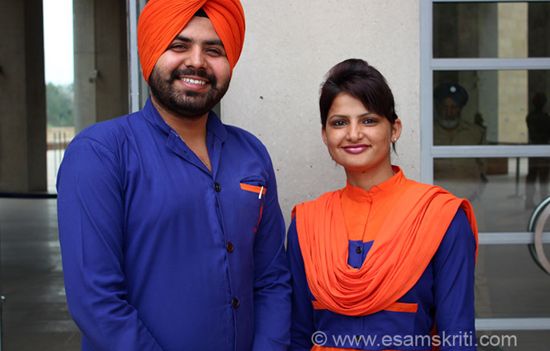 Smiling Punjabis who work at Khalsa Museum, Anandpur Sahib. 2014.
Smiling Punjabis who work at Khalsa Museum, Anandpur Sahib. 2014.
It is only when we realize this will we
know that India cannot be a theocratic state like others. To buttress this argument
the author gives examples of evolution of Christianity in the West and shares
thoughts of Swami Vivekananda, Sri Aurobindo and senior journalist, the late
Girilal Jain. Read on.
India is a Hindu majority nation just
like U.S.A. and England are Christian majority and Saudi Arabia Muslim
majority. However, there are significant differences between Indic and Abrahamic
faiths. It is like comparing apples with grapes. Author compares the two
here
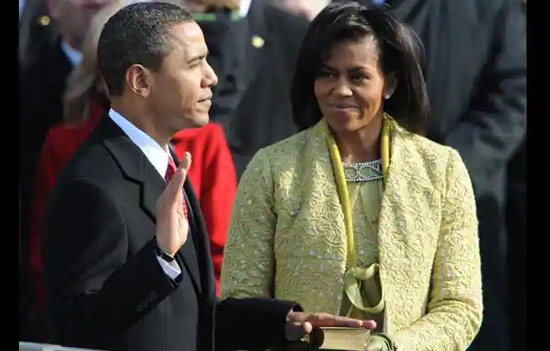 Obama takes oath as President with one hand on the Bible. Courtesy Mint.
Obama takes oath as President with one hand on the Bible. Courtesy Mint.
The U.S. President takes oath of office with
one hand on the Bible. We are willing to accept that without a murmur but the
very mention of Hindu Rashtra! No Indian Prime Minister takes oath on the Vedas
or the Holy Gita.
Do we
know that long before the concept of nation state and Constitution came into
being India gave shelter to persecuted Jews and Parsis amongst others.
The word Indic is often used in this
article. It means Indian thought and is a combination of the nine schools of
Indian philosophy which are Nyaya, Vaisheshika, Sakhya, Yoga, Mimamsa, Vedanta, Carvaka, Jaina and Buddhist.
Others are a mixture of the ideas in these systems. Using modern day
connotations Indic means Hindu, Buddhist, Jain and Sikh people.
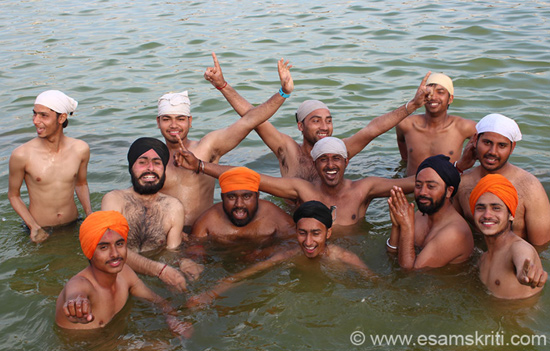 Devotees at sarovar opposite Keshgarh Sahib Gurdwara, Punjab. 2014.
Devotees at sarovar opposite Keshgarh Sahib Gurdwara, Punjab. 2014.
Here are some points of
differences between Indic and Western evolution and concepts.
1. J Sai Deepak tells about life in pre-1648 Europe. He wrote that power was distributed between the pope, bishops and the Holy Roman Emperor etc. Pg 80 There Christ was the only way to reach God and Christ could be reached only through the Church. Pg. 85 Further, “The Augsburg Settlement allowed each State within the empire to determine its Christian denominational identity, which laid the foundation for sovereign States in Europe.” Pg. 91 India, that is Bharat
Conversely, in Bharat followers of
Dharma were never governed by the equivalent of a Church. There were multiple
ways to moksha that co-existed.
Indian thought is intertwined, so Lord Indra a
Vedic deity can be worshipped in Buddhism too
This compilation by author, based on the
Institute of Culture volumes published by the Ramakrishna Mission, tell how
different parts of India including modern day Afghanistan contributed to its
religious thought. Different parts
of India contributed to Indian Religious Thought It
means Saab ka Saath, involving all.
Indians did not need an Augsburg Settlement to do this. It was a natural
process of evolution because i.e. the way Indics are.
The British imposed the Westphalia
nation-state modal on a society as diverse and different from Europe.
Read What is the
concept of God in Sanatana Dharma and Christianity
2. Another
key difference between the West and Bharat is philosophy vs. darsana. Philosophy
is a Western word which mainly relies on intellectual pursuit. The
corresponding Indian word is Darsana which
relies on direct vision of the truth (experienced by ancient sages all
over Bharat) and pure Buddhi (reasoning).
Thinkers from different schools debated
with each other for example Adi Sankara and Mandana Misra. This interactive
process was ongoing, meaning old ways of thinking were forever giving way to
the new.
Indians thus, are not stuck in the past. Read Debate between
Sankara and Mandana Mishra
In Indic thought, there is nothing like
this is the only one way to mukti.
There exist multiple ways. It seems opponents of Hindu Rashtra are probably benchmarking
with the West and Middle East where there is only one way. Thus, they are unable
to comprehend the Indic way. I am all for imbibing good points from the West,
which are many, but you cannot understand your nation based on foreign concepts.
Even today, some say India is a Federation like USA when it is a Union of States (read
by author)
Read Characteristics
of Indian Philosophy and Salient Features
of Indian Culture
3. On
Dharma Maharshi Aurobindo said, “It has been said that democracy is based on the rights of man; it has been replied that it should rather take its stand on the duties of man; but both rights and duties are European ideas. Dharma is the Indian conception in which rights and duties lose the artificial antagonism created by a view of the world, which makes selfishness the root of action, and regain their deep and eternal unity. Dharma is the basis of democracy which Asia must recognize, for in this lies the distinction between the soul of Asia and the soul of Europe.” (India’s Rebirth)
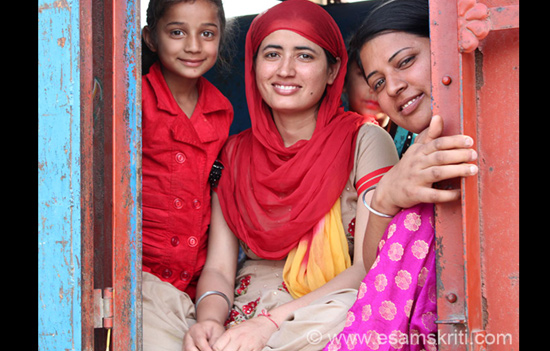 Punjabi lady visiting Anandpur Sahib for Hola Mohalla celebrations. 2014.
Punjabi lady visiting Anandpur Sahib for Hola Mohalla celebrations. 2014.
Indics must reflect on how they live and think. These words
might help them understand their society and selves better.
Senior Journalist, the late Girilal Jain
wrote in the Hindu Phenomenon, “In the Hindu view, the state has to be an expression of the Hindu ethos and personality. Such a state cannot either discriminate against any religious group or impose a uniform pattern on the inhabitants. Indeed, it would feel obliged to look after their well-being and the preservation of their ways of life.” Pg. 12
He also wrote, “Indian culture has been known for its catholicity and willingness to give as well as take. It withdrew into a shell when it felt gravely threatened and became rigid; but that is understandable”. Pg. 114
Swami
Vivekananda said in his 1893 Chicago address, “Unity in variety is the plan of nature, and the Hindu has recognized it.” Thus, the same festival
Holi and Dussehra
are celebrated differently ways across India.
Read Why
do Sindhis worship Granth Sahib i.e. also worshipped by Sikhs
Read Swami Vivekananda’s 1893 Chicago Parliament Address
Indics
might realize that Indian Culture does not impose itself on other cultures, it
gets assimilated or assimilates. Maharshi Aurobindo said in 1919, “Hinduism is in the first place a non-dogmatic inclusive religion and would have taken even Islam and Christianity into itself, if they had tolerated the process.”
Then
why are Hindus protesting?
Hindus are protesting because they
desire equal rights
under law as enunciated here, disbanding of
European and undefined concepts like Secularism and Minority, a Constitution i.e.
rooted in Indian ethos and freedom to manage their temples. Simply put, they
desire a level playing field and wish to “renew themselves in the spirit of their civilization” and preserve their unique civilization.
Author
wrote
Hindus cannot be governed by Christian concept of Religious Denomination
And Why Secularism is not an Indian concept And Who is a
Religious Minority India And Hindu victims of
Hate Crime
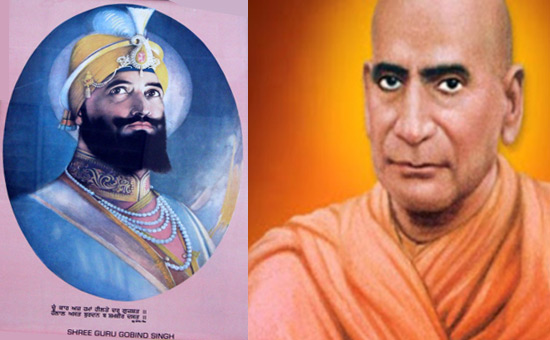 Hindu victims of Hate Crime.
Hindu victims of Hate Crime.
Indics wish history to be written
without prejudice. But why is the past important?
Swami Vivekananda said in 1895, “Now days everybody blames those who constantly look back to their past. It is said that so much of looking back to the past is the cause of all of India’s foes. So long as they forgot the past, the Hindu nation remained in a state of stupor and as soon as they have begun to look into their past, there is on every side a fresh manifestation of life. It is out of this past that the future has to be molded.”
Without deep diving into Indic thought Hindu
Rashtra cannot be simply translated as Hindu Nation and construed that India
would be a theocratic state like Saudi Arabia, Pakistan and Bangladesh.
We must also realize that democracy has deep roots in India. It is not a colonial gift. Read Concept of
Democracy in Vedas and Dharma Sastras and by author What is India
It is unfortunate that the
Indian mind has got so colonised that its people treat western concepts as
Bharatiya and then evaluate their country against those very concepts.
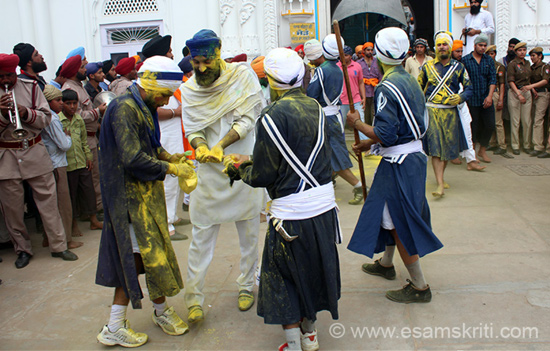 Holi celebrations at Hola Mohalla, Anandpur Sahib. 2014.
Holi celebrations at Hola Mohalla, Anandpur Sahib. 2014.
Those who speak about 1984 will not talk
about the massacre of Hindus all through the 1980s. Read by author What happened
during the Khalistani Movement
The Followers of Dharma want Bharat to be the Land of Dharma, so aptly described in the Supreme Court logo, “Yato dharma tato Jaya’; where there is dharma, there is victory.”
Bharat can never become a Rashtra like
the countries of the West or Middle East. If India ceases to be the land of
Dharma the world will become poorer because the knowledge of spirituality, yog
and ayurved would be lost forever. If Dharma ceases to exist India may be
divided like Sudan, Africa into
Muslim and Christian parts.
All Indians, higher judiciary and
bureaucracy included, need to re-discover Bharatiya samskriti and darsana so
they realize that India can never be a Hindu Rashtra as the West and Middle
East understand it.
References
1. The Hindu Phenomenon by Girilal Jain
2. India that is Bharat by J Sai Deepak
3. Seven Systems of Indian Philosophy by Pt Rajmani Tugnait.
Also read
1. CAA redeems historical promises
2. Indian Muslims and the well of victimhood
3. Empowerment of Pasmanda Muslims is a must
4. Why British demonised Caste
5. Why Secularism is not an Indian concept
6. Human Rights in Sanatana Dharma
7. The Truth about Caste
8. Sacred Plants of India
9. Co-existence of Hindu, Buddhist, Jain monuments
10. Animals in Indian culture create an inclusive universe
11. Question and Answers Indian Culture
12. How Indian is the Indian Constitution
13. Hindus cannot be governed by Christian concept of Religious Denomination
14. The battle between Secular India and Bharat
15. India Land of the Bharatas
All article pictures by author. In case of any errors, write back with details and source document. If found appropriate, shall make amends.